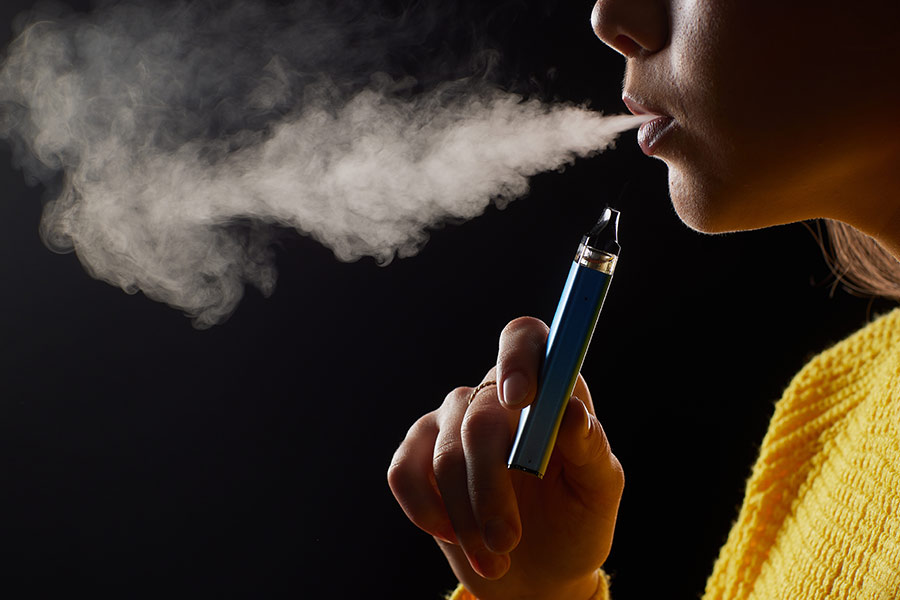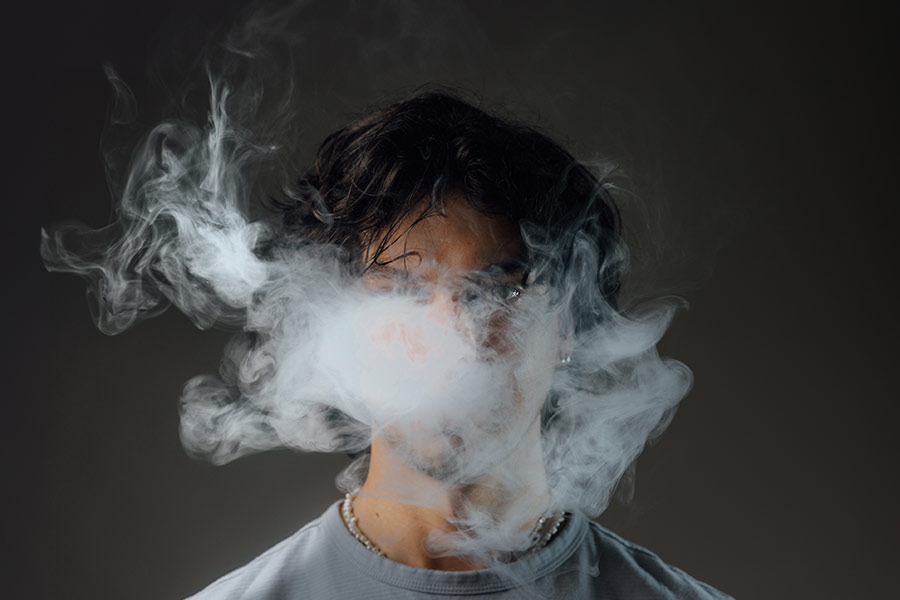Each year on World No Tobacco Day (May 31), attention turns to the 13.5 lakh lives that tobacco claims annually in India. With one of the world’s largest populations of tobacco users, India faces a public health crisis. Globally, countries are adopting harm-reduction options like vaping to help smokers quit. But in India, the sale and import of e-cigarettes have been banned since 2019 — a move that has had unintended consequences.
Rather than eliminating vaping, the ban has driven it underground. Smuggled devices, mostly from China, now flood local markets with no checks on content or safety. Meanwhile, smokers looking to quit are left with few viable options. My Kolkata explores India’s vaping paradox through the voices of advocates, former users, and healthcare professionals.
‘No regulation, no accountability’
“We are committed to ensuring people have access to something less harmful than what they’re using,” says Samrat Chowdhery, director of the Association of Vapours India. A harm-reduction advocate, Chowdhery believes the ban was a missed opportunity. “Instead of regulating, we pushed everything into the black market. Now we don’t know what’s being sold, who’s selling it, or to whom.”
Before the ban, he says, vendors self-regulated. "They wouldn't sell to minors. They wanted to build real businesses. Post-ban, smuggling took over. Disposable vapes with unknown substances now dominate the market."

Has the e-cigarette ban made users continue with cigarettes? iStock
He argues that India has ignored scientific consensus. “Globally, the data is clear: vaping is significantly less harmful than smoking. UK, US, Canada all support it as a quitting tool. But in India, the least harmful nicotine product is banned while gutkha, bidi, zarda, and cigarettes are widely available."
Chowdhery attributes the policy to vested interests. “The government earns tens of thousands of crores through tobacco taxes. There’s no incentive to reduce that revenue stream.”
The irony, he notes, is that the ban, which was meant to protect children, made vapes more accessible. “Earlier, access was controlled. Now, you can buy a ₹300 vape from a paan shop. No regulation, no accountability.”

Vaping helped Ujjaini Mukhopadhyay quit cigarettes Shutterstock
Ujjaini Mukhopadhyay, owner of HiyarMajhe by Ujjaini, an online fashion store, began vaping when she was abroad. “Juul was the go-to brand. Clean, discreet, and odourless. It helped me quit cigarettes.”
Returning to India, she initially ordered vapes online. “I used websites that shipped discreetly. But by mid-2024, even that dried up. That’s when I tried a local vape from a paan shop on Park Street. It was cheap — ₹500 — and awful. Gave me a sore throat.”
Cost was another issue. “A starter kit with pods was about ₹5,000, and lasted only two weeks. For young professionals, that’s not sustainable.”
She also observed vaping’s social transformation. “It became a symbol — like, if smoking is Satyajit Ray, vaping is Honey Singh. Flashy, modern, seen as cool.”
Eventually, she quit vaping . “Ironically, it was easier to stop vaping. ”
Her advice is measured. “Unless you’re already addicted and looking for a cleaner alternative, I wouldn’t recommend vaping. In India, it’s too complicated, too risky.”

Doctors warn against viewing vaping as a healthy switch Shutterstock
Madhu Priya, a pulmonologist at Desun Hospital in Kolkata, warns against viewing vaping as a healthy switch. “Yes, people are quitting cigarettes — but they’re switching to something that still damages the lungs. We see cases of chronic cough, inflammation, and even rare conditions like ‘popcorn lung’ from vaping.”
She stresses that vapes contain irritants. “Flavouring chemicals, even in small amounts, can cause long-term injury to the lungs. The damage isn’t always reversible.”
Her advice is clear: “There’s no such thing as a ‘safe amount’. Whether you smoke one cigarette or vape once a day, the dependency and harm continue. The only solution is complete cessation.”
Souvik Barman, consultant, pulmonology, Woodlands Multispeciality Hospital, says that while vaping may be less carcinogenic than tobacco, it is far from benign. “It affects the lungs, heart, and digestive system. Over time, vapour exposure can shrink lung capacity and cause fibrotic damage.”
He explains that in the UK, vaping is used medically and under supervision. “In India, with no regulation and everything under the table, it becomes a serious health risk.”
Barman has observed a rise in young users, especially women. “They’re drawn to vaping because it seems cleaner. But many return with health issues. If someone already has a smoker's lungs, vaping accelerates the damage.”
At a crossroads: Ban, regulate, or educate?
India’s ban on vaping was rooted in concerns about youth addiction — a valid worry. But five years on, it’s clear the prohibition has not stopped usage. Instead, it has created a parallel economy, deprived adult smokers of safer alternatives, and left public health experts without tools to intervene.
Chowdhery notes that in countries where vaping is regulated, teen access is addressed through structured laws. “In the Philippines, 60% of their vape law is dedicated to preventing teen use. But they still allow adults to switch.”
Doctors like Barman and Priya caution that neither vaping nor smoking should be encouraged. But they also acknowledge that misinformation is dangerous. “People need to know the risks — but also the facts,” says Priya.
As India and the world mark another No Tobacco Day, the debate continues. Should harm-reduction tools be banned because of potential misuse, or regulated to offer users a better path forward?
The answer may decide whether millions of smokers remain trapped in addiction — or find a way out.
